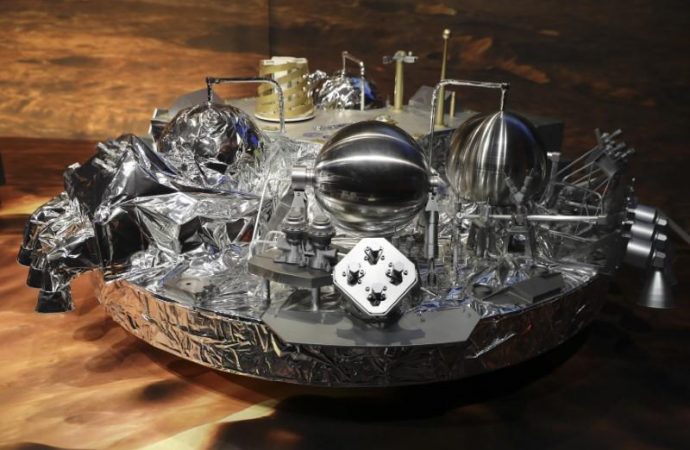The European Space Agency’s mission to search for life on Mars has reached an important milestone with its six-wheeled surface rover prototype ready for its “shake and bake”.
Built by Airbus Defence and Space just north of London in Stevenage, Britain’s unlikely “Space City”, the so-called Structural Thermal Model is being packed off to Toulouse, France, for a raft of tests to ensure the real ExoMars rover handles anything the red planet can throw at it.
If the 2020 mission goes to plan it would be Europe’s first rover on Mars, following several successful NASA landings.
Europe’s last attempt to land a rover vehicle on the surface of Mars ended in disappointment in 2016 when Schiaparelli span out of control and slammed into the red sand.
The ESA rover will be more sophisticated though, featuring a two-meter exploration drill and an autonomous navigation system.
“That’s the most exciting thing that hasn’t been done before, we’ve got a huge two meter drill so it can go into the crust which is where we think life would be if it was still surviving,” ExoMars Delivery Manager Abbie Hutty told Reuters.
“At the surface the radiation is extreme and conditions too hostile. Down below different layers of rock, maybe in a fissure where there may be water deposits could be a nice place for life to still be surviving.”
Hutty will keep a close eye on the prototype tests in Toulouse where the launch from a Russian rocket will be simulated as well as the massive temperature variations it will endure 54 million km away on Mars.
Data sent back from the ESA’s Mars Express satellite are helping scientists choose the most suitable landing site.
The ExoMars Rover’s autonomous navigation, which will enable it to steer itself rather than wait 24 minutes for instructions from Earth, has been undergoing testing at Airbus’s Mars Yard.
The Stevenage center has a mock-up of the planet’s surface complete with specially dried sand, boulders and Mars-like light intensity, if not the radiation.
Its six “wafer wheels” made of thin strips of metal and unique suspension system means it can scale rocks and roll across the sandy landscape.
“The cool thing about the wheels is that they are fully metallic and give us the traction and grip of a rubber wheel without taking anything organic from earth. They will be able climb over rocks and also dig through deep sand,” Hutty said.
Once testing is completed in France, work will begin on building the finished rover as well as a twin that will stay in Stevenage.
Source: Reuters

































Leave a Comment
You must be logged in to post a comment.